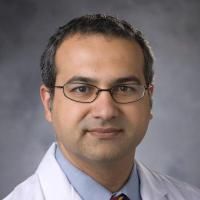Surgical Techniques for Revascularization in Abdominal Wall Transplantation.
Date
2020-04-25
Journal Title
Journal ISSN
Volume Title
Repository Usage Stats
views
downloads
Citation Stats
Abstract
BACKGROUND: Abdominal wall vascularized composite allotransplantation (AW-VCA) can be considered as a technically feasible option for abdominal wall reconstruction in patients whose abdomen cannot be closed using traditional methods. However, successful initial abdominal wall revascularization in the setting of visceral organ transplantation can pose a major challenge as graft ischemia time, operating in a limited surgical field, and variable recipient and donor anatomy must be considered. Several techniques have been reported to accomplish abdominal wall revascularization. METHODS: A literature review was performed using PubMed for articles related to "abdominal wall transplantation (AWT)." The authors of this study sorted through this search for relevant publications that describe abdominal wall transplant anatomy, technical descriptions, and outcomes of various techniques. RESULTS: A total of four distinct revascularization techniques were found in the literature. Each of these techniques was described by the respective authors and reported varying patient outcomes. Levi et al published a landmark article in 2003 that described technical feasibility of AWT with anastomosis between donor external iliac and inferior epigastric vessels with recipient common iliac vessels in end-to-side fashion. Cipriani et al described a microsurgical technique with anastomosis between donor and recipient inferior epigastric vessels in an end-to-end fashion. Giele et al subsequently proposed banking the abdominal wall allograft in the forearm to reduce graft ischemia time. Recently, Erdmann et al described the utilization of an arteriovenous loop for synchronous revascularization of abdominal wall and visceral transplants for reduction of ischemia time, operative time, while eliminating the need for further operations. CONCLUSION: Vascularized composite allotransplantation continues to advance with improving immunotherapy and outcomes in solid organ transplantation. Optimizing surgical techniques remains paramount as the field continues to grow. Refinement of the presented methods will continue as additional evidence and outcomes become available in AW-VCA.
Type
Department
Description
Provenance
Subjects
Citation
Permalink
Published Version (Please cite this version)
Publication Info
Atia, Andrew, Andrew Hollins, Ronnie Shammas, Brett T Phillips, Kadiyala V Ravindra, Debra L Sudan, Henk Giele, Suhail K Mithani, et al. (2020). Surgical Techniques for Revascularization in Abdominal Wall Transplantation. Journal of reconstructive microsurgery. 10.1055/s-0040-1709481 Retrieved from https://hdl.handle.net/10161/21183.
This is constructed from limited available data and may be imprecise. To cite this article, please review & use the official citation provided by the journal.
Collections
Scholars@Duke

Andrew N Atia

Brett Thomas Phillips

Kadiyala Venkata Ravindra

Debra L Sudan
I am interested clinically in all abdominal organ transplants (kidney, liver, pancreas and intestine). I am specifically interested in intestine transplantation and improving intestine graft preservation and long-term graft function and patient survival. In addition, I am interested in monitoring of patients to improve our ability to determine the etiology of graft dysfunction when there are complex interacting issues such as infection and rejection as well as examining better immunosuppressive regimens to maintain excellent graft function. We have numerous research studies and trial to improve our knowledge in these areas and thereby contribute to improved patient outcomes!

Suhail Kamrudin Mithani

Detlev Erdmann
Unless otherwise indicated, scholarly articles published by Duke faculty members are made available here with a CC-BY-NC (Creative Commons Attribution Non-Commercial) license, as enabled by the Duke Open Access Policy. If you wish to use the materials in ways not already permitted under CC-BY-NC, please consult the copyright owner. Other materials are made available here through the author’s grant of a non-exclusive license to make their work openly accessible.
